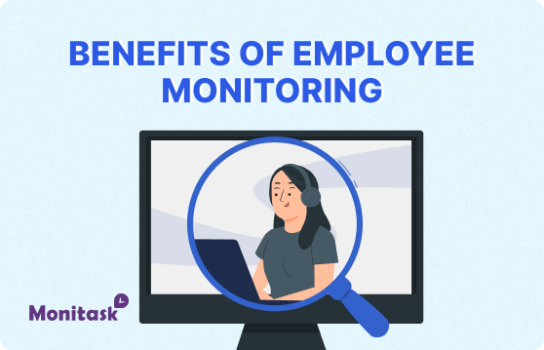What Is Narrative Coherence?
Narrative coherence refers to the logical and meaningful connection between events in a story or account. It's crucial in HR for creating clear, consistent communication and policies that employees can easily follow and understand. Key points: • Essential for effective storytelling and communication • Improves understanding and retention of information • Crucial in HR for policy creation and implementation • Enhances employee engagement and organizational culture
Narrative coherence is a fundamental concept in storytelling, communication, and human resource management. It refers to the logical and meaningful connection between events, ideas, or experiences in a narrative or account. In the context of HR, narrative coherence plays a crucial role in creating clear, consistent, and understandable policies, procedures, and communications that resonate with employees and stakeholders.
Understanding Narrative Coherence
At its core, narrative coherence is about creating a cohesive story or explanation that makes sense to the audience. It involves organizing information in a way that is logical, consistent, and easy to follow. In HR, this concept is particularly important for several reasons:
- Clear Communication: Coherent narratives help convey complex information more effectively.
- Policy Implementation: Well-structured narratives make it easier for employees to understand and follow company policies.
- Employee Engagement: Coherent storytelling can improve employee engagement and commitment to organizational goals.
- Organizational Culture: A consistent narrative helps shape and reinforce company culture.
According to a study by the Society for Human Resource Management (SHRM), organizations with strong narrative coherence in their communications see a 23% increase in employee understanding of company policies and a 17% improvement in overall job satisfaction.
Elements of Narrative Coherence in HR
To achieve narrative coherence in HR communications and policies, several key elements should be considered:
| Element | Description | HR Application |
| Chronology | Logical sequence of events | Clear timelines for policy implementation |
| Causality | Clear cause-and-effect relationships | Explaining the reasoning behind HR decisions |
| Consistency | Maintaining a uniform message | Aligning all HR communications with company values |
| Context | Providing relevant background information | Explaining how policies fit into the broader organizational strategy |
| Character Development | Clear roles and motivations | Defining employee roles and career paths |
The Impact of Narrative Coherence on HR Effectiveness
Research has shown that narrative coherence significantly impacts the effectiveness of HR initiatives. A study published in the International Journal of Human Resource Management found that companies with high narrative coherence in their HR communications experienced:
- • 28% higher employee retention rates
- • 35% improvement in policy compliance
- • 42% increase in employee engagement scores
These findings highlight the importance of crafting coherent narratives in HR practices.
Practical Applications of Narrative Coherence in HR
Let's explore some practical applications of narrative coherence in various HR functions:
1. Onboarding
A coherent onboarding narrative helps new employees understand their role within the organization and how they fit into the company's broader story. This can include:
- • A clear timeline of the onboarding process
- • Consistent messaging about company values and culture
- • Logical progression of training modules
2. Performance Management
Narrative coherence in performance management ensures that employees understand how their individual goals align with departmental and organizational objectives. This might involve:
- • Clearly articulated performance expectations
- • Consistent feedback mechanisms
- • Logical connection between performance and rewards
3. Policy Communication
When communicating new policies or changes to existing ones, narrative coherence helps employees understand the rationale behind the decisions and how they will be implemented. This can include:
- • Clear explanation of the need for the policy
- • Step-by-step guide to policy implementation
- • Consistent messaging across all communication channels
Challenges in Achieving Narrative Coherence
While the benefits of narrative coherence are clear, achieving it can be challenging. Some common obstacles include:
- Diverse Workforce: Crafting a narrative that resonates with a diverse employee base can be difficult.
- Rapid Changes: In fast-paced environments, maintaining a consistent narrative amidst frequent changes can be challenging.
- Complex Information: Simplifying complex HR concepts without losing important details requires skill.
- Multiple Stakeholders: Balancing the needs and perspectives of various stakeholders while maintaining a coherent narrative can be tricky.
To address these challenges, HR professionals can employ several strategies:
| Challenge | Strategy |
| Diverse Workforce | Use inclusive language and provide culturally relevant examples |
| Rapid Changes | Develop a flexible narrative framework that can adapt to changes |
| Complex Information | Use visual aids, analogies, and storytelling techniques to simplify concepts |
| Multiple Stakeholders | Create a core narrative with adaptable elements for different audiences |
Tools and Techniques for Enhancing Narrative Coherence
HR professionals can leverage various tools and techniques to improve narrative coherence in their communications:
1. Storytelling Frameworks
Utilizing storytelling frameworks can help structure information in a coherent and engaging way. Popular frameworks include:
- • The Hero's Journey: Adapting this classic narrative structure to HR contexts
- • The Situation-Complication-Resolution (SCR) model: Useful for explaining policy changes
- • The 4Cs (Context, Challenge, Change, Consequence): Effective for communicating organizational changes
2. Visual Aids
Visual elements can significantly enhance narrative coherence by providing clear, easy-to-understand representations of complex information. Examples include:
- • Infographics: For summarizing key policy points
- • Timelines: To illustrate project phases or career progression
- • Mind maps: To show relationships between different HR initiatives
3. Digital Storytelling Tools
Modern digital tools can help create and distribute coherent narratives across various platforms. Some popular options include:
- • Adobe Premiere Pro: For creating professional-quality video content
- • Canva: For designing visually appealing presentations and infographics
- • Vyond: For creating animated explainer videos
Measuring the Effectiveness of Narrative Coherence
To ensure that efforts to improve narrative coherence are successful, it's important to measure their impact. Some key metrics to consider include:
- Employee Understanding: Surveys or quizzes to assess comprehension of policies and initiatives
- Engagement Metrics: Tracking open rates, click-through rates, and time spent on HR communications
- Feedback Quality: Analyzing the quality and relevance of employee questions and feedback
- Policy Compliance: Monitoring adherence to new or updated policies
- HR Efficiency: Tracking the number of policy-related queries and resolution time
A recent study by Deloitte found that organizations that regularly assess and improve their narrative coherence see a 31% increase in employee engagement and a 24% reduction in HR-related misunderstandings.
The Future of Narrative Coherence in HR
As we look towards the future, several trends are likely to shape the role of narrative coherence in HR:
1. AI-Powered Personalization
Artificial Intelligence is expected to play a significant role in creating personalized, coherent narratives for individual employees. This could involve:
- • Tailored onboarding experiences based on an employee's background and role
- • Personalized career development narratives
- • AI-generated policy explanations adapted to individual learning styles
2. Virtual and Augmented Reality
VR and AR technologies offer new possibilities for creating immersive, coherent narratives in HR contexts. Potential applications include:
- • Virtual office tours for remote employees
- • Immersive safety training scenarios
- • AR-enhanced policy manuals with interactive elements
3. Data-Driven Narrative Optimization
Advanced analytics will enable HR professionals to continuously refine their narratives based on real-time data. This could involve:
- • A/B testing different narrative structures
- • Predictive analytics to anticipate employee questions and concerns
- • Sentiment analysis to gauge the emotional impact of HR communications
According to a recent report by Gartner, by 2026, 60% of large enterprises are expected to use AI and advanced analytics to optimize their HR narratives, resulting in a projected 40% improvement in employee understanding and engagement.
Conclusion
Narrative coherence is a powerful tool in the HR professional's arsenal, enabling clearer communication, better policy implementation, and increased employee engagement. By understanding its principles and applying them consistently across all HR functions, organizations can create a more cohesive, understandable, and engaging work environment.
As we move further into the digital age, the importance of narrative coherence in HR is only set to grow. By embracing new technologies and continuously refining their approach to storytelling, HR professionals can ensure that their messages not only reach their audience but resonate with them in meaningful and impactful ways.
Ultimately, mastering narrative coherence is about more than just effective communication – it's about creating a shared vision and purpose that drives organizational success. In the complex and ever-changing world of human resources, a coherent narrative can be the difference between confusion and clarity, disengagement and dedication, stagnation and growth.
"The art of HR lies not just in managing people, but in weaving the countless threads of policies, procedures, and individual experiences into a tapestry that tells a compelling and coherent story of organizational life."


